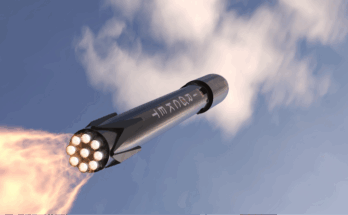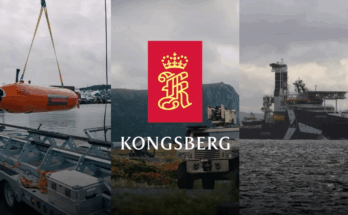by Richard Pettibone, Forecast International.
As the world’s largest defense contractor, Lockheed Martin has been restructuring its operations to deal with a global defense downturn and the effects of sequestration in the USA.
To its credit, Lockheed Martin was already preparing for a downturn following the wind-down of hostilities abroad. Now, with sequestration reductions the law of the land, the firm has begun investigating further overhead and employment cuts while simultaneously ramping up lean manufacturing processes.
The effect of sequestration on Lockheed Martin’s various units will differ, even though the overall impact of sequestration was diminished in the near term by congressional action. For example, the Aeronautics and Space Systems divisions, thanks to long product cycles, will be lightly impacted. For segments with shorter cycles, such as Information Systems & Global Solutions, Missiles and Fire Control, and Mission Systems and Training, the impact will be more severe.
These units have borne the brunt of workforce cuts and plant closings over the past few years – so much so that Lockheed Martin’s employment has dropped 23 percent, from 146,000 jobs in 2008 to 112,000 in 2015. More cuts are coming as plants in Newtown, Pennsylvania; Akron, Ohio; Goodyear, Arizona; and Horizon City, Texas, and four buildings on Lockheed Martin’s Sunnyvale, California, campus, complete their closure proceedings in 2015. By 2016 employment might drop to as low as 110,000.
While difficult, the moves are needed to position Lockheed Martin for the current economy. These reductions have cut overhead and reduced factory land costs, resulting in the improved profit margins of late.
For 2014, Lockheed Martin reported sales of $45.6 billion, up slightly from 2013 sales of $45.4 billion. The company posted net income of $3.61 billion for the year, compared with net income of $2.98 billion in 2013. The Aeronautics segment includes Lockheed Martin’s largest program, the F-35 Lightning II Joint Strike Fighter, which represented approximately 17 percent and 16 percent, of sales for 2014 and 2013, respectively.
As it looks ahead, Lockheed Martin is looking abroad for opportunities to maintain revenues. In 2014, the company hit its initial goal of 20 percent of sales coming from international markets. Company officials feel confident that this can easily hit 25 percent in the next few years, and possibly even 30 percent.
Leading this growth will be international orders for the F-35, while other contributors will include the C-130J transport, missile defense systems (the Patriot PAC 3 and THAAD), cybersecurity, and information technology services. The F-35 will be the key driver of this expansion, with nearly half of its orders coming from countries outside the U.S.
As part of this effort, the company established Lockheed Martin International, with joint headquarters in London and Washington. This operation will be the tip of the spear as the company looks to aggressively penetrate foreign markets. The company already is at home in areas such as Canada, the U.K., and Australia. Now, it plans to ramp up operations in such countries as the UAE, Saudi Arabia, Japan, and India.
Another growth avenue for Lockheed Martin will be in the burgeoning cybersecurity arena. As sophisticated cyber attacks increase around the globe, the need for strong protection is becoming acute. Thanks to its prior experience in protecting defense assets, Lockheed Martin is well positioned to meet the demand for cybersecurity services in critical infrastructure areas such as energy, oil and gas, and financial institutions.
According to company officials, demand for commercial cybersecurity services has jumped in the past two years. In response, in 2014 Lockheed Martin acquired Industrial Defender, a provider of cybersecurity solutions for control systems in the oil and gas, utility, and chemical industries. The company anticipates that it will generate double-digit growth for commercial cyber services over the next five years.
A shift of military technologies to commercial use is also being investigated in other areas. For example, the company has developed a new product that may cut costs for water desalinization facilities. Most recently, the company has pushed into green energy with a partnership to develop wave energy systems under the PowerBuoy project. Finally, its Skunk Works is working on a compact fusion reactor (CFR) concept which could be a major energy resource technology if it reaches fruition.
Lockheed Martin is not sitting idle as its key market begins to decline. The company’s management is responding quickly to the shifting marketplace as best it can and is expected to astutely manage its business operations and product portfolio going forward.
For 50 years, Forecast International intelligence reports have been the aerospace and defense industry standard for accurate research, analysis, and projections. Our experienced analysts compile, evaluate, and present accurate data for decision makers. FI's market research reports offer concise analysis of individual programs and identify market opportunities. Each report includes a program overview, detailed statistics, recent developments and a competitive analysis, culminating in production forecasts spanning 10 or 15 years. Let our market intelligence reports be a key part of reducing uncertainties and mastering your specific market and its growth potential. Find out more at www.forecastinternational.com



